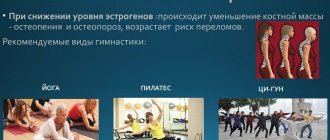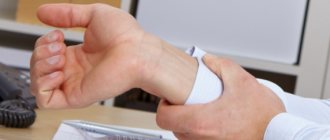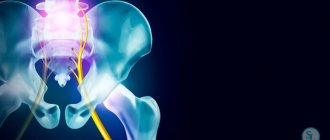Pathogenesis
The factor provoking the development of the disease is:
- bacterial (campylobacter), viral (Epstein-Barr virus, cytomegalovirus, influenza virus) or mycoplasma infection;
- HIV infection, SLE, malignant neoplasms that trigger an autoimmune process, as a result of which the inflammatory process is activated with the formation of immune complexes that damage the nerve sheath or axonal core.
- Pathogenesis
- Classification
- Clinical picture
- Diagnostics
- Differential diagnosis
- Treatment
- Disease prognosis
[/dt_sc_contents]
Classification
GBS with typical clinical manifestations:
- Demyelinating form (about 90% of cases of the disease) – the disease is based on acute demyelination of the roots of the spinal and cranial nerves.
- Axonal form (occurs much less frequently) - damage to nerve axons is typical, the course of the disease is much more severe. It is divided into 2 types:
- acute motor - distinctive feature: only motor fibers are affected.
- acute motor-sensory - a combination of damage to sensory and motor fibers.
GBS with an atypical clinical picture:
- Miller-Fisher syndrome is a variant of GBS characterized by a triad of symptoms: ophthalmoplegia (paralysis of the eye muscles), areflexia (decrease and then loss of reflexes), cerebellar ataxia (impaired motor coordination).
- Acute sensory polyneuropathy is a combination of severe sensory disturbances and increasing sensory ataxia (impaired gait and coordination of movements due to suffering from muscle-articular sensitivity).
- Acute pandysautonomia is characterized by the involvement of both the sympathetic and parasympathetic parts of the autonomic nervous system in the process, resulting in a symptom complex: orthostatic hypotension, impaired gastrointestinal motility up to gastroparesis, neurogenic urination disorders, impaired accommodation and pupillary reactions, disruption of the salivary glands. Violation of sweating, etc.
- Acute cranial polyneuropathy is characterized by the involvement of isolated cranial nerves in the process.
- Pharyngo-cervico-brachial form - characterized by impaired function of the muscles of the pharynx, arms and neck flexors.
- Paraparetic pariant - the lower extremities are affected by the disease, while the upper extremities remain unaffected.
List of sources
- Piradov M.A., Suponeva N.A. “Guillain-Barré syndrome: diagnosis and treatment. Guide for doctors" - 2011;
- Zhulev N.M., Osetrov B.A., Zhulev S.N., Lalayan T.V. Neuropathies: A Guide for Doctors. - St. Petersburg: Publishing House SPbMAPO, 2005;
- Diseases of the nervous system in children: in 2 volumes. T. 2 / ed. J. Aicardi et al.; lane from English; total ed. A. A. Skoromets. - M.: Panfilov Publishing House; BINOMIAL. Knowledge Laboratory 2013;
- Levin, O.S. Polyneuropathies: clinical guidelines / O.S. Levin. - M.: MIA, 2011;
- Ponomarev V.V. Rare neurological syndromes and diseases. - St. Petersburg, 2005.
Clinical picture
- The first clinical manifestations are often paresthesia (numbness, burning, tingling) and pain in the hands and feet, less often in the mouth and tongue.
- After this, general malaise and low-grade fever develop.
- Next, progressive muscle weakness appears (maximum severity develops by 4-5 weeks), which has a number of features:
- Symmetrical, as with other polyneuropathies.
— Ascending nature (first the lower limbs suffer, then the upper limbs are involved in the process).
— Involvement of facial muscles in the pathological process on both sides in 70%.
- More rare, but at the same time more dangerous, is the involvement of the swallowing and respiratory muscles; Oculomotor disturbances also sometimes occur.
- Weakening of reflexes and their complete loss.
- Autonomic disorders (orthostatic hypotension, supraventricular tachyardia, coldness and chilliness of the hands and feet, acrocyanosis, increased sweating and hyperkeratosis of the soles).
- A sharp decrease to the point of loss of vibration and proprioceptive sensitivity.
You should know that the diagnostic criteria for the disease are symmetrical progressive paresis in the limbs in combination with areflexia, appearing by 4-5 weeks of the disease (although the disease often reaches the peak of its severity by 2-3 weeks).
In favor of Guillain-Barré syndrome, the doctor should also be guided in the diagnostic search by such signs as: progression of symptoms up to 4 weeks, protein-cell dissociation in the cerebrospinal fluid, symmetry of symptoms, the presence of mild sensory disorders, changes in EMG (but it should be remembered that these are not obligate signs of disease)
Phases of the disease:
- The progression phase usually lasts 2-4 weeks and is characterized by an increase in these symptoms. If this phase lasts from 4 to 8 weeks, then the polyneuropathy is called subacute inflammatory demyelinating polyneuropathy. If this phase lasts more than 8 weeks, the disease acquires chronic status.
- The plateau phase lasts from 1 to 4 weeks and is characterized by stabilization of the patient’s condition.
- The recovery phase often lasts several weeks and sometimes months and is characterized by regression of symptoms and restoration of motor function.
Treatment of acute and chronic inflammatory demyelinating polyradiculoneuropathy
ABOUT
acute inflammatory demyelinating polyneuropathy (AIDP), also known as Guillain-Barré syndrome, acute post-infectious polyradiculoneuropathy, is one of the most severe diseases of the peripheral nervous system. Currently, AIDP is the most common cause of acute peripheral paralysis, along with polymyositis, myasthenia gravis and poliomyelitis. The disease occurs with a frequency of 1.7 per 100,000 people per year, evenly in different regions, at any age, in men more often than in women.
Early and characteristic clinical symptoms of AIDP
are progressive muscle weakness, mild sensory disturbances, damage to the cranial nerves (usually facial and bulbar), areflexia in the limbs.
The disease is characterized by a monophasic course, when all clinical symptoms develop within 1-3 weeks, then a “plateau” phase begins, and after it a regression of symptoms begins. In the acute phase of the disease, the most serious and life-threatening complications of the patient are severe motor impairment (paralysis), peripheral autonomic failure and weakness of the respiratory muscles. Therefore, all patients, regardless of the severity of the condition, should be hospitalized and be closely monitored due to the significant risk of respiratory and autonomic failure. The development of respiratory failure does not always correlate with the severity of the motor defect and the severity of polyneuropathy. For example, severe respiratory failure has been described in patients with Fisher syndrome (ataxia, areflexia, ophthalmoplegia) - the mildest variant of AIDP. Sometimes respiratory failure may be the first symptom of the onset of the disease
.
Respiratory failure in ARDP is of neuromuscular origin and develops in 25% of patients. Pre-existing diseases of the respiratory system, especially chronic obstructive pulmonary pathology, significantly increase the risk of developing respiratory failure. For a preliminary assessment of respiratory function, it is recommended to study the tidal volume and respiratory rate, but the “gold standard” in assessing pulmonary function remains the measurement of vital capacity
(VC).
In the first days of the disease, patients develop progressive weakness of the respiratory muscles, which makes active exhalation difficult and inhibits the cough reflex, which leads to the development of miliary pulmonary atelectasis, invisible on x-ray examination. Hypoxia caused by atelectasis is expressed in increased breathing and increased fatigue of the respiratory muscles. Clinically, it is manifested by shortness of breath, constant tachycardia and excessive sweating. When the diaphragm is weak, a paradoxical type of breathing develops with inversion of the abdominal wall during inspiration. In order to eliminate hypoxia when vital capacity is less than 15 ml/kg body weight, it is necessary to transfer the patient to mechanical ventilation
, and it is advisable to do this before the first signs of respiratory failure and fatigue of the respiratory muscles appear. The presence of bulbar disorders in a patient is an indication for a faster transition to mechanical ventilation. If endotracheal intubation continues for more than 5-7 days, a tracheostomy is performed to prevent tracheal stenosis. The time to stop mechanical ventilation depends on the clinical picture. Initially, the patient is transferred to an auxiliary respiratory mode; if vital capacity is more than 15 ml/kg, mechanical ventilation is stopped, but auxiliary ventilation is maintained for several days during sleep. The use of mechanical ventilation has reduced mortality in ARDP from 15% to 5%, and now respiratory failure alone is rarely the cause of death [1, 2].
In addition to correcting respiratory failure, patients with severe AIDP need a balanced diet, maintaining water and electrolyte balance and other important components of homeostasis, and preventing infectious and hemocoagulation complications. The primary goal is also the prevention of bedsores, contractures, compression neuropathies, and deep vein thrombosis of the legs. These tasks are performed by frequent changes of body position, passive therapeutic exercises, splinting the wrists and ankle joints, and administering 5000 units of sodium heparin subcutaneously 2 times a day. Autonomic disorders are observed in almost all patients in the progressive phase of the disease and with severe motor disorders. Clinical symptoms of peripheral autonomic failure usually correlate with the severity of polyneuropathy and the condition of the patients, but cases have been described in which acute peripheral autonomic failure was the onset of the disease. Peripheral autonomic failure syndrome
manifests itself in patients with impaired sweating, orthostatic hypotension, arterial hypo- and hypertension, persistent tachycardia, transient cardiac arrhythmia, fever, short-term urinary retention.
The most serious complication is damage to the autonomic apparatus of the heart, which can lead to sudden cardiac arrest. Therefore, it is necessary to monitor cardiac activity and monitor the RR interval on the ECG. Severe autonomic disorders are the cause of almost half of deaths. However, in the vast majority of patients, autonomic disorders are moderate and transient; phenoxybenzamine
(20-60 mg/day) is recommended to reduce them. Urinary retention is usually observed in 10-20% of patients in the first days of the disease. Due to damage to the parasympathetic innervation, weakness of the bladder detrusor develops, residual urine increases, urinary retention appears, which leads to the development of urinary infection in 20% of patients. Prescribing an adequate dose of ampicillin (2-4 g/day) usually clears up a urinary infection. If constipation occurs, it is recommended to administer laxatives (sodium picosulfate 10-15 drops orally) or rectal suppositories. Intestinal obstruction develops, as a rule, in the first weeks and only in isolated patients with diabetes mellitus [2].
In the first days and weeks of the disease, about 50% of patients complain of severe pain
.
Clinical analysis has shown that pain can be myogenic, arthrogenic and neuropathic. Myalgia and arthralgia are successfully relieved with acetylsalicylic acid (2 g/day), ketoprofen (100-300 mg/day), paracetamol (1.5 g/day) for 1-2 weeks. Musculoskeletal pain sometimes quickly subsides after a single intramuscular injection of methylprednisolone (20-40 mg). For neuropathic pain, the use of amitriptyline (75 mg/day), carbamazepine (400 mg/day) in combination with tranquilizers and benzodiazepines is indicated. But these drugs should be used with caution, as they can provoke arterial hypotension, cardiac arrhythmia and respiratory depression. Transcutaneous peripheral nerve stimulation
is effective for neuropathic pain .
For hyperpathia and dysesthesia, local use of capsaicin
. For severe pain, codeine (180-360 mg/day) can be prescribed; many centers successfully use epidural opioids in such cases.
In the pathogenesis of AIDP, the leading role belongs to immunopathological disorders
. The autoimmune hypothesis of pathogenesis has led to the widespread use of corticosteroids to treat this disease. An analysis of the literature on long-term treatment of patients with corticosteroids showed that no convincing data have been obtained indicating their effectiveness. During 1950-1970 A large number of observations have been published in the literature on the effective use of corticosteroids and adrenocorticotropic hormone (orally, parenterally and intravenously) for AIDP. However, multicenter, prospective, double-blind, placebo-controlled studies conducted in recent years have shown that corticosteroids did not shorten the acute phase of the disease, did not reduce the length of hospitalization, and did not lead to a more rapid regression of neurological symptoms [2]. Corticosteroids contributed to the recurrence of the disease and an increase in purulent-septic and hypercoagulable complications. Therefore, the rule has now been formulated that treating severe forms of AIDP with corticosteroids is a medical error. Unfortunately, it should be recognized that in Russia corticosteroids continue to be used in the treatment of this disease [3, 4].
Cytostatics began to be used in the complex treatment of ARDP after their effectiveness was established in animals with experimental allergic neuritis, which is an adequate model of ARDP. The use of various cytostatics (6-mercaptopurine, cyclophosphamide, azathioprine) orally or intravenously was effective in subacute and recurrent disease, but the degree of improvement did not differ from those patients who did not receive treatment. The use of cytostatics is often accompanied by serious complications characteristic of these drugs (nausea, vomiting, alopecia, blood changes, etc.). No controlled studies have yet been conducted regarding the use of cytostatics in AIDP, and their use in this disease is problematic [2, 5].
Currently, plasmapheresis is the main, most effective and affordable method of treating patients with ARDP.
. Plasmapheresis was first successfully used by R. Bretfle et al in 1978. In subsequent years, multicenter, prospective, double-blind, placebo-controlled studies involving hundreds of patients were conducted in many countries to study the effectiveness of plasmapheresis in ARDP. The results of these studies and fifteen years of world experience allow us to recommend this method of treatment to patients in the stage of increasing neurological symptoms requiring artificial ventilation (ALV), or with severe weakness, when patients are unable to walk more than 5 meters. In one procedure, a volume of at least 35-40 ml of plasma per 1 kg of body weight is removed and at least 160 ml of plasma per 1 kg of body weight per course of treatment; number of sessions – 3-5 with an interval of no more than 2 days. A 5% albumin solution is used as a replacement component for plasmapheresis, since this drug, unlike fresh frozen plasma, produces fewer complications and has no risk of transferring hepatitis B and AIDS. When using plasmapheresis, the duration of mechanical ventilation and the time of stay in the intensive care unit are reduced by half, muscle strength and the ability to move independently are restored more quickly. The effectiveness of plasmapheresis is higher if it is performed in the first 10 days of illness. Plasmapheresis is safe for pregnant women and children suffering from AIDP. It is not recommended to combine plasmapheresis with corticosteroids, as the latter reduce its therapeutic effectiveness. Approximately 5-10% of patients after plasmapheresis may experience relapses of the disease, which, as a rule, quickly regress with the use of the previous treatment regimen [1, 6].
In the last decade, a new effective method for treating ARDP using intravenous administration of immunoglobulin G
at a dose of 0.4 g/kg body weight every other day 5 times. The therapeutic effect of immunoglobulin is based on the anti-inflammatory effect, neutralization of antiviral, antibacterial antibodies and autoantibodies, binding and neutralization of activated complement. In terms of effectiveness, immunoglobulin is equal to plasmapheresis, but has fewer complications (headache, skin reactions, lower back pain, chills, aseptic meningitis). Immunoglobulin is contraindicated in patients with immunoglobulin A deficiency, as they are at risk of developing anaphylactic shock. In the domestic literature, there are 2 reports of the successful use of immunoglobulin in AIDP [4, 7, 8].
The clinical status of patients with ARDP is assessed according to the currently generally accepted scale (in points):
0 – healthy
0
1
– minimal signs of damage
2
– can walk 5 meters independently
3
– can walk 5 meters with support
4
– unable to walk 5 meters, uses a wheelchair
5
- needs mechanical ventilation.
Patients with a severity of 1-3 points do not need plasmapheresis; they are indicated for symptomatic therapy. All patients with AIDP due to motor disorders, bulbar syndrome, damage to the cranial nerves, and respiratory failure need psychological support. Currently, 85% of patients with AIDP experience complete functional recovery, 20% of patients die, and 10-20% have residual effects (most often paresis of varying severity). After suffering from AIDP, patients are contraindicated from vaccinations for 1 year, and antitetanus serum is contraindicated for life due to the risk of developing chronic demyelinating polyradiculoneuropathy
(CIDP).
CIDP in its clinical, electrophysiological and morphological data resembles AIDP, but has a recurrent, progressive or monophasic type of course. Each patient has his own, unchanged type of course. The disease is relatively rare; men are affected 2 times more often than women. In CIDP, bulbar and autonomic disturbances are mild, and patients, as a rule, do not require mechanical ventilation. Issues of clinical course, diagnosis and laboratory tests for CIDP are presented in the domestic literature [9, 10]. Treatment of CIDP is difficult. Prednisolone is recommended for all patients
at a dose of 1.5 mg/kg daily for 2-4 weeks; as the condition improves, gradually switch to taking the same dose of prednisolone every other day.
If the recovery period is satisfactory, the dose of prednisolone can be gradually reduced (by 5 mg every 2 weeks). After 3-4 months, switch to a maintenance dose (20 mg every other day), which is taken for another 2 months. Thus, the course of treatment lasts an average of 6 months. Prednisolone is discontinued upon complete restoration of limb muscle strength and satisfactory results of electroneuromyographic (ENMG) studies. If clinical improvement is not observed within 1-2 months of treatment, it is recommended to add plasmapheresis
(2 times a week for 3 weeks).
If remission occurs after plasmapheresis, it is recommended to continue it once every 2 weeks for another 1.5 months. The technique of plasmapheresis is described above. An alternative to plasmapheresis is intravenous immunoglobulin
(0.4 mg/kg body weight for 5 days).
In the absence of clinical improvement during treatment with prednisolone in combination with plasmapheresis, it is recommended to combine prednisolone
(the dose is reduced by 2 times) with
azathioprine
or treat with azathioprine only (2-3 mg/kg body weight per day). We observed patients who did not respond to prednisolone, but recovered after a course (6-8 months) of treatment with azathioprine. It should be remembered that azathioprine is a potentially dangerous drug, so the patient must be constantly monitored (blood tests, platelet levels, liver tests). There are reports in the literature about the beneficial effect of cyclophosphamide in CIDP (orally, pulse therapy). With any treatment regimen for CIDP, deterioration of the condition may occur during dose reduction. In order not to lose control of the disease, it is necessary to increase the dose of the drug again, and after stabilization of the condition, begin to reduce the dose, but at a slower pace. Currently, there are no scientifically developed treatment regimens for patients with CIDP, so the practical experience of the doctor is of great importance in treatment. About 65-70% of patients with CIDP recover, 5-10% die, the rest have sensorimotor defects of varying severity [1, 2].
The etiology and pathogenesis of AIDP and CIDP are currently being intensively studied, so there is hope for the emergence of new and more effective ways to treat these diseases.
Literature:
1. Latov N., Wokke JN, Kelly J. Immunological and infectious diseases of the peripheral nerves/ Cambridge, University Press/ - 1998. 435 p.
2. Parry GI Guillian-Barre Syndrome. — Thieme Medical Publishers. NY - 1993.-200 p.
3. Neretin V.Ya., Kiryakov V.A., Sappirova V.A. Infectious-allergic polyradiculoneuritis Guillain-Barré (Review) // Journal of neurol and psychiatry.-1992.-No. 3.-P. 111-114.
4. Piradov M.A., Avdyunina I.A. Guillain-Barré syndrome: problems of treatment and terminology // Neurol. magazine - 1 996.-No. 3.-S.ZZ-36.
5. Mozolevsky Yu.V. Clinic and treatment of acute inflammatory demyelinating polyradiculoneuropathy // Journal. neuropathol. and psychiatrist. - 1992. - No. 2. - P. 6-9.
6. Piradov M.A. Plasmapheresis in the treatment of acute inflammatory demyelinating polyradiculoneuropathy (Review of foreign literature) // Journal. neuropathol. and psychiatrist.-1991.-No.9.-S. 102-106.
7. Artemyev D.V., Nodel M.R., Dubanova E.A. et al. Axonal variant of Guillain-Barre syndrome, cured with immunoglobulin // Nevrol. journal - 1997. - No. 5. - P. 9-13.
8. Bykova O.V., Boyko A.N., Maslova O.I. Intravenous use of immunoglobulins in neurology (Literature review and own observations) // Nevrol. magazine -2000.-5.-P.32-39.
9. Gekht B.M., Merkulova D.M. Practical aspects of the clinic and treatment of polyneuropathies // Nevrol. journal - 1997. - No. 2. - P. 4-9.
10. Mozolevsky Yu.V., Dubanova E.A., Ivanov M.I. Clinic and treatment of chronic inflammatory demyelinating polyradiculoneuropathy // Journal. neurol. and a psychiatrist. - 1992. - No. 3. - P. 106-110.
Diagnostics
- Careful collection of anamnesis for previous infections and vaccinations.
- EMG is not always informative, as it is often within normal limits in the first weeks. Typical changes are:
- in acute inflammatory demyelinating polyneuropathy: decreased impulse conduction speed along motor nerves, proximal type conduction block, increased latency of F-waves.
— about acute sensorimotor axonal polyneuropathy: a decrease in the amplitude of the total action potentials of motor muscles and sensory nerve fibers, signs of demyelization in a maximum of 1 nerve.
- in acute motor axonal polyneuropathy: a decrease in the amplitude of the total action potentials of the motor muscles, sensory fibers remain intact, demyelination is also in a maximum of 1 nerve.
- in acute sensory polyneuropathy: motor fibers are not affected, there is a decrease in the amplitude of the total action potential of the sensory nerves.
- Study of cerebrospinal fluid: protein-cell dissociation. In the first days, however, it is not always possible to detect it, therefore the study of the cerebrospinal fluid should be carried out over time. It should be remembered that false-positive results are possible with intravenous administration of immunoglobulins.
- MRI of the brain and spine allows you to see changes in the roots, but to a greater extent this method is used in the differential diagnosis of tumors and stroke.
- Blood tests: detection of antibodies in the blood
- for acute inflammatory demyelinating neuropathy - antibodies unknown
— for acute motor axonal neuropathy – GM1+GM1b, GD1a
- for acute motor-sensory axonal neuropathy - GM1+GM1b, GD1a
- for acute sensory neuropathy - GD1b
- for Miller-Fisher syndrome - GQ1b.
Differential diagnosis
- Spinal form of poliomyelitis. At the onset of the disease there may be meningeal signs; then asymmetrical flaccid paresis and paralysis develop, a decrease in tendon reflexes only on the affected side, and there are practically no sensory and autonomic disorders. Currently, given the vaccination against polio, the disease is rare and differential. Diagnosis of this disease is becoming increasingly rare.
- Spinal cord tumor. Common with Guillain-Barré syndrome: clinical picture and changes in the CSF. Differences: it often develops gradually, paresis is spastic in nature, pyramidal signs are detected.
- Polyneuropathy in acute intermittent porphyria. It is characterized by the onset of autonomic disorders: abdominal pain, constipation and diarrhea, rapid heartbeat, increased blood pressure. Also with this pathology, mental disorders are observed, such as anxiety, depression, and in more severe cases, delirium and convulsive syndrome. Polyneuropathy is of a peculiar nature: the upper extremities are the first to be involved, starting from the proximal parts; tendon reflexes remain intact longer, and sensory disturbances occur less frequently and are milder in severity.
- Brain stem stroke. The disease often manifests itself with complaints from the head: headaches, dizziness, accompanied by nausea and vomiting, speech impairment. Then alternating syndromes are added, characterized by damage to the cranial nerve on the side of the pathological process and motor or sensory disorders of the limbs and body on the opposite side.
Causes
This disease was first described in 1916 by neurologists from France G. Guillen and J. Barre, after whom the disease was later named. But there is still no accurate information about the reasons for its occurrence. Basically, the disease develops as a consequence of a previously manifested acute infection in the patient. There is an assumption that the disease is provoked by a filterable virus . But still, most experts are inclined to believe that Guillain-Barre syndrome is of an allergic nature.
The disease is considered an autoimmune process in which destruction of nervous tissue develops. Consequently, the human immune system begins to “fight” its own body and produces antibodies to certain molecules of the nerve sheath. Damage occurs to the nerves and nerve roots, which are located at the junction of the peripheral and central nervous systems. There is no damage to the brain or spinal cord. The disease begins to develop under the influence of viruses. In this case, most often the disease begins with damage to the body by cytomegalovirus , Epstein-Barr virus , and bacteria. The immune response to the penetration of a foreign agent develops in the normal state of the body. But in some cases, disruptions in the reaction to one’s own and foreign cells appear. As a result, the immune system fights against the body.
Treatment
General therapeutic measures:
- Considering the possibility of developing respiratory failure, monitoring vital capacity and respiratory rate is necessary, and it is possible to transfer the patient to mechanical ventilation.
- For swallowing problems with a risk of aspiration, insert a nasogastric tube.
- It is necessary to perform a dynamic ECG, since one of the complications of the disease is disruption of the heart rhythm. In this case, the doctor must be prepared to perform the Valsava maneuver, as well as drug and electrocardioversion.
- In case of urination disorders, bladder catheterization is performed.
Special treatment:
- Intravenous immunoglobulin (IVIG) is the method of choice.
- Plasmapheresis has long occupied a leading place in the treatment of Guillain-Barré disease, however, given the somatic burden of patients, this method is somewhat worse than the previous one due to its more severe tolerability.
The combination of these two methods does not provide a greater therapeutic effect than monotherapy with IVIG or plasmapheresis.









